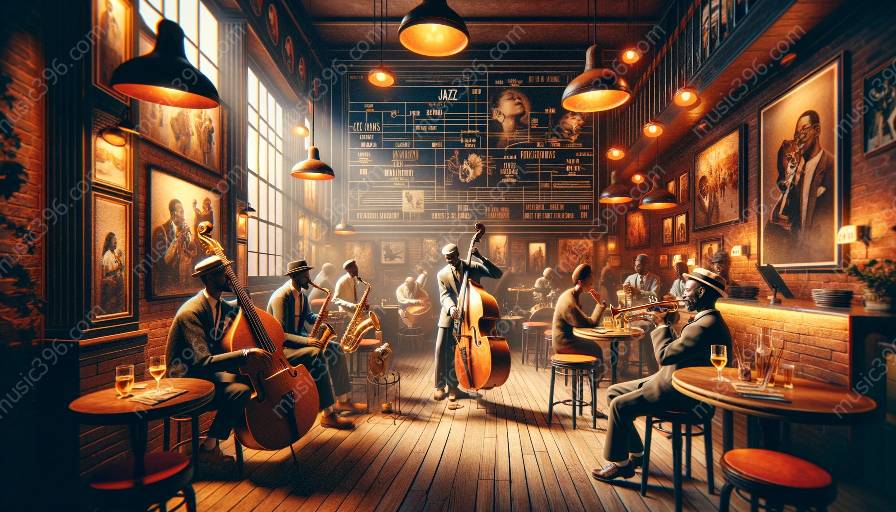Jazz music, with its roots in African and African-American traditions, has always been intertwined with the social and political changes of the 20th century. As a form of expression for marginalized communities, jazz not only reflected the evolving societal landscape but also actively responded to it. Understanding the impact of social and political changes on jazz music is crucial for comprehending its history and significance in jazz studies.
The Early 20th Century: The Birth of Jazz
Jazz emerged in the early 20th century as a direct response to social and political upheavals. The Great Migration brought African Americans from the rural South to the urban North, leading to a convergence of musical traditions and experiences. As a result, jazz evolved into a synthesis of various musical styles and cultural influences, becoming a potent symbol of the African American experience.
The music also functioned as a form of resistance against systemic racism and segregation. It created a space for African American musicians to assert their creativity and agency, challenging the racial injustices of the time. Jazz music became a vehicle for social commentary, reflecting the struggles and aspirations of African Americans during an era of significant racial tension.
The Swing Era and World War II
The swing era of the 1930s and 1940s exemplified the societal changes of the time. Jazz music, particularly swing, became a unifying force across racial and cultural divides. However, the outbreak of World War II introduced a new set of challenges and opportunities for jazz. The music served as a source of comfort for soldiers and civilians alike, offering solace and hope during a tumultuous period.
At the same time, the war effort brought about significant demographic shifts and increased the visibility of African American culture on the global stage. Jazz played a crucial role in shaping the cultural diplomacy efforts of the United States, with prominent musicians serving as cultural ambassadors and representing American ideals abroad. The music became a catalyst for cross-cultural exchanges and mutual understanding, transcending political boundaries through its universal appeal.
The Civil Rights Movement and Musical Innovation
The Civil Rights Movement of the 1950s and 1960s brought forth a new wave of social and political activism, and jazz music was at the forefront of this movement. Musicians such as John Coltrane, Nina Simone, and Max Roach used their art to express solidarity with the struggle for racial equality. The music became a platform for advocating social change, addressing issues of justice, and challenging the status quo.
Furthermore, the era witnessed significant musical innovation within the jazz genre. Avant-garde and free jazz movements emerged, signaling a departure from traditional tonal and structural conventions. This experimental approach mirrored the societal upheaval of the time and provided a sonic representation of the quest for liberation and self-expression.
The Legacy of Jazz and Contemporary Relevance
Today, jazz continues to respond to social and political changes, albeit in new contexts. The genre remains a vehicle for addressing contemporary issues, from racial inequality to global interconnectedness. Artists continue to draw inspiration from societal challenges, using jazz as a means of fostering dialogue and advocating for positive transformation.
The history of jazz music and jazz studies are intrinsically linked to the social and political dynamics of the 20th century. By examining the interplay between jazz and societal changes, we gain a deeper understanding of the music's enduring significance and its ability to transcend cultural borders.





























